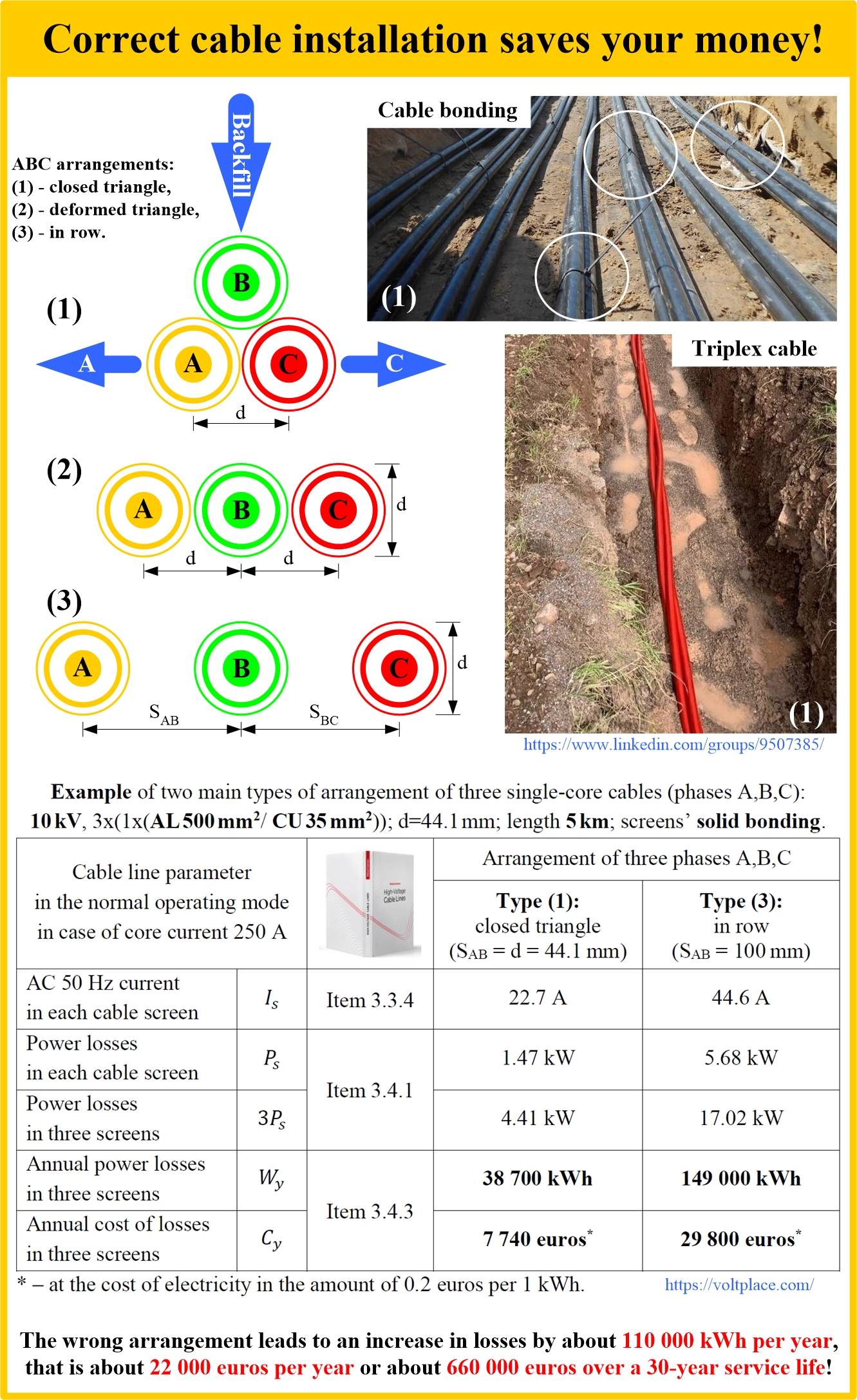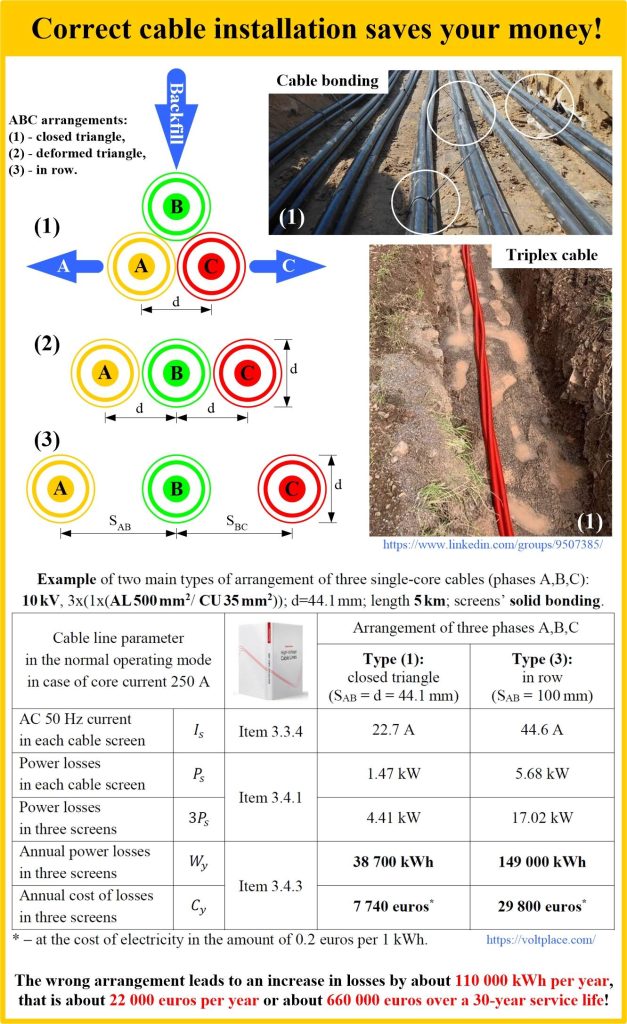
Three cables arrangement
In 6-35 kV networks, single-core cables are most often arranged in a closed triangle (1), and cable screens have a small cross-section of up to 50 mm2 and a simple solid grounding. Let us figure out what happens if the cables, contrary to the project, are laid not in a closed triangle, but otherwise.
Three single-core cables of 6-35 kV laid in a closed triangle (1) should be bonded together with belts. Otherwise, when filling with soil, the upper phase may be lowered between the other two (2). It should be noted that a convenient alternative to the periodic bonding of the three phases is a triplex cable, which consists of three phases twisted together by manufacturer.

There are cases when cables are laid in a row (3) because this method of laying is easier for installation organizations (since cables do not need to be assembled together and bonded). Let us understand what happens if the cables are laid not in a triangle, but in a row:
✅ The longitudinal induced 50 Hz currents in the screens (Is), and the associated power losses in the screens (Ps) will become larger – this is bad.
✅ The cooling of the cables will get better – this is good.
✅ The magnetic field above the cable line will increase – this is not so good, if core currents are greater than 1000 A.
✅ The longitudinal impedance of the positive sequence (active, inductive) will increase, that is, voltage drop on the cable line will increase – this is not so good, if the cable line is long.
Taking into account the first two factors, the permissible current of the cable line core will change, but without calculations it is difficult to say whether it will increase or decrease – the answer depends on the cross-section of the screens and their grounding scheme. For example, for a 10 kV line with a screen cross-section of 35 mm2, which is grounded on both sides, the permissible current will not change much (about 5% only).
Let’s talk today about just the power losses in the screens. Suppose that the installation company deviated from the project and laid the phases not in a closed triangle (1), but in a row (3). How much will the losses in the screens (and, consequently, in the entire cable line) increase?
We will make the calculation using the example of a typical single-circuit 10 kV cable line, with AL 500 mm2 / CU 35 mm2 cables, 5 km long, with an average annual core current of 250 A.
It can be seen from the table that the results of changing (1) to (3) are:
✅ Induced currents increased 2 times.
✅ Power losses increased 4 times.
✅ The cost of losses increased 4 times.
If we speak in absolute units, then:
✅ Energy losses increased by ~110 000 kWh per year.
✅ The cost of losses increased by ~22 000 euros per year.
✅ The cost of losses increased by ~660 000 euros per 30 years.
The wrong single-core cables arrangement of a typical 10 kV cable line will cost the owner more than 0.5 million euros! The money is right under our feet!
Please don’t forget to get the book
